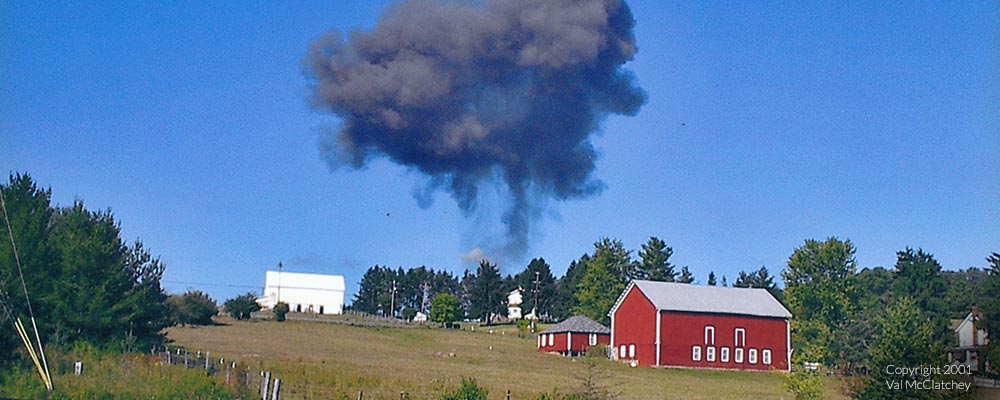September 11, 2001 began as an ordinary, late-summer day. As the sun rose, fair weather and blue skies prevailed over much of the country, and thousands of commercial airliners prepared for flight. But, in less than two hours' time, this seemingly-routine day was transformed.
Nineteen terrorists boarded and hijacked four airplanes to attack America. Nearly 3,000 people were killed when the hijacked planes were flown into the World Trade Center in New York City, the Pentagon near Washington, DC, and when United Airlines Flight 93 crashed in the Pennsylvania countryside.
Flight 93 did not arrive at the hijackers' intended target in the nation's Capital because of the selfless, courageous actions of those on board. When Flight 93 was hijacked, the passengers and crew members used airfones on the plane to contact the authorities and their loved ones.
Through their phone conversations, they learned of the attacks elsewhere, and subsequently took quick action to prevent further loss of life. As a result of phone calls made from on board Flight 93 and from the cockpit voice recorder recovered at the crash site, we learn of the struggle the passengers and crew had with the hijackers which began in the skies over Western Pennsylvania, and ended with the high-speed crash of the plane in a desolate reclaimed strip mine near Shanksville, just 18 minutes flying time from Washington, DC. Countless lives were spared, but all on board Flight 93 were lost.
A common field was transformed into a field of honor.
Flight 93 National Memorial
The United States Congress unanimously voted to create a permanent, National Memorial at the location where Flight 93 crashed, designating the final resting place of the passengers and crew as a new unit of the National Park Service.
The design for Flight 93 National Memorial was chosen from more than 1,000 entries in an international competition. It provides a series of visitor experiences beginning with a three-mile journey through a landscape that still hints at its mining past, leading visitors to an overlook where a Visitor Center and Learning Center are being constructed.
Visitors are also invited to go on contemplative walks among forty memorial groves of trees. Today, a Memorial visit culminates with a walk on the Memorial Plaza adjacent to the crash site, the final resting place of the passengers and crew of Flight 93.
The names of the forty passengers and crew are inscribed on a wall of polished white marble panels erected along the flight path.
In September 2015, the Flight 93 National Memorial Visitor Center and Learning Center will open, providing an even deeper level of information about this seminal day in history through engaging exhibits and educational programming. New walking paths among memorial groves of trees and over wetlands will provide places for quiet contemplation.
Flight 93 National Memorial is a place to be inspired by the courageous actions of the forty passengers and crew of Flight 93.
Friends of Flight 93 National Memorial
The Friends of Flight 93 National Memorial is recognized by the National Park Service as the official supporting organization for the Memorial. Incorporated in 2009, the Friends include family members of the passengers and crew, first responders, U.S. Capitol employees, residents of the communities near the National Memorial, and members from across the United States who share the same goal: to ensure the story of Flight 93 is always honored, remembered, and shared.
The Friends of Flight 93 National Memorial is dedicated to educating future generations about the Flight 93 story, maintaining the highest standards of care for the memorial, and providing meaningful experiences for its visitors.

